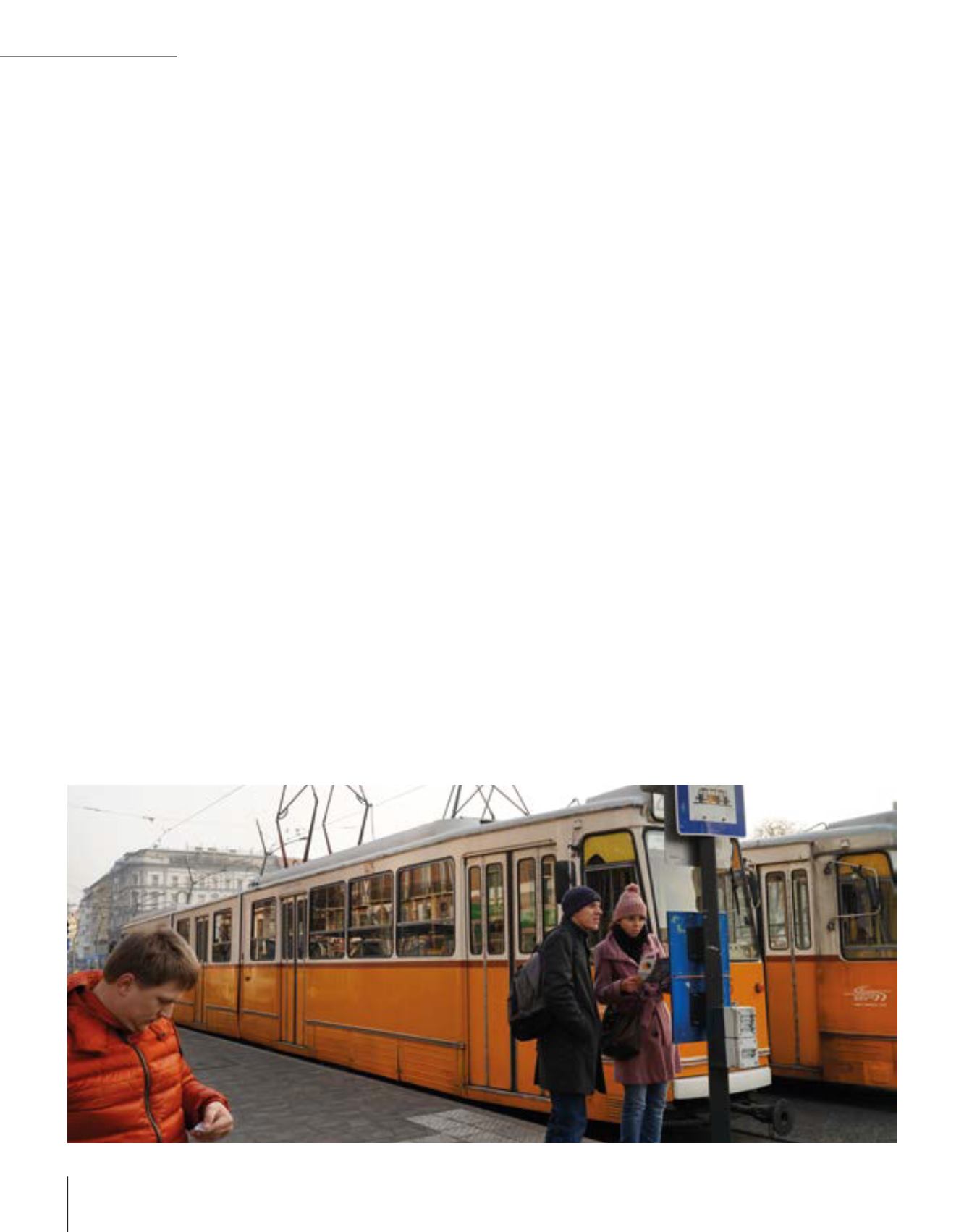
108
uzaktaki yakın
so far so close
seferinde. Taş üstünde taş
kalmayan şehir, Sovyet
birliklerince kanlı bastırılan
Macar Devrimi sonrası gelen
uzun demir perde döneminde
yaralarını sarabilmiş.
Altmışlardan seksenlerin
sonuna kadar Budapeşte
Doğu Bloku’nun batıdaki en
mutlu “kışlası” olarak anılırmış.
20. yüzyılın sonlarında ise
demir perdenin aralandığı
1989 Devrimleri ile sivil
hayattaki değişim Budapeşte
sokaklarına da yansımış. Ve
nihayetinde günümüzde NATO
ve AB üyesi olan Macaristan
başkentindeki tek partili
komünist rejim döneminden
kalan heykel ve anıtlar kamusal
alanlardan kaldırılmış ve
meraklıları için Hatıra Parkı’na
taşınmış.
Nasıl Gidilir?
Ulaşım ve Stalin
Budapeşte’ye İstanbul’dan
kalkışlı çok sayıda alternatif ile
yurtdışı için oldukça ekonomik
fiyatlarla uçmak mümkün.
Genel olarak şehrin de diğer
Avrupa kentlerine göre daha
ucuz olduğunu belirtmeli.
Yaklaşık iki saatlik uçuş
sonunda varacağınız Liszt
Ferenc Havalimanı şehrin 20
km kadar dışında yer alıyor.
Şehirde gelişmiş bir metro ağı
olmasına rağmen havaalanına
kadar ulaşamıyor maalesef.
En yakın olan mavi hattın son
durağı ile havaalanı arasında
200E otobüs servisi mevcut.
Alternatif olarak havaalanı-
şehir merkezi arasında da
otobüs servisleri var elbette.
Ücret 2100 Forint (HUF). Bu
aşamada sonraki günlerde
toplu taşımda kullanacağınız,
çok sayıda müzeye ücretsiz
giriş ve bazılarında da indirim
hakkı veren, rehberli turlara
katılma ve bir de hamam
ziyareti imkânı tanıyan
Budapest Card edinmek fena
fikir değil. Macaristan AB üyesi
ancak avroya geçiş yapmamış
durumda. Yanında HUF
gördüğünüz fiyat etiketlerinden
iki sıfır atıp kalan sayıyı üçe
bölmek avro karşılığına kabaca
ulaşmanızı sağlayacak. Yine
de alışverişlerinizde ve günlük
hayatta avro kullanmak
mümkün. Havaalanından
şehir merkezine taksi ücreti
ise yaklaşık 25 avro. 4
hatta çalışan metro, otobüs
ve tramvaylar ile şehrin
her noktasına ulaşmak
mümkün. Budapeşte’yi
keşfetmenin en keyifli yolu
ise elbette ki tramvay. Etrafı
seyrederek tıngır mıngır
şekilde gezinmek her zaman
güzel. Budapeşte’deki ilk
to be lift by the end of the
20th century, with the 1989
Revolution, the changes to the
civil life spread to the streets
of Budapest. And today, a
member of NATO and the EU, the
Hungarian capital removed the
statues reminiscent of the single
party communist regime from the
public areas and placed them to
the Memento Park.
How to get there?
Transportation and Stalin
There are many cost-effective
direct flight alternatives to
Budapest from Istanbul. I have to
say the city is relatively cheaper
than other European cities.
You will reach the Ferenc Liszt
Airport, 20km far from the city,
after a two-hour flight. Though
the city has an advanced subway
system, unfortunately it does
not reach the airport. There is
the 200E bus between the last
stop of the closest blue line and
the airport. There are of course
shuttle busses. They cost around
2100 Forint (HUF). At this point
in your visit, it is very wise to
get the Budapest Card which
you will use for public transport,
free admittance or discounts
in many museums, in guided
tours and a visit to the baths.
Hungary is a member of the EU
but not the Eurozone. Drop two
zeroes from the HUF prices and
divide by three to get a rough
Euro equivalent. Still, you can
use Euros in daily life and while
shopping. Taxi from the airport
to the city center is around 25.
The city very accessible with
4 subway lines, busses and
trams. The best way to discover
Budapest is evidently the tram. It
is always nice to shuffle around
in the tram, watching around. The
first tram line started operating
on the 70th birthday of Stalin in
1949, thus all the lines start from
70. There are around 30 lines and
most go to the Buda part as well.
Especially a trip on the line 2 will
take to the most interesting parts
of the city, like a tour bus.
Where to stay?
Budapest, which is actually a
metropolis, is soundly moving
on the road to becoming a
tourism capital of Europe with
the Danube, world famous hot
springs, historical riches and
night life. It is the second largest
city of Central Europe, following
Berlin, with its 1.8 million
population; amounting to 1/5 of
the population of Hungary. So
whatever your expectations are,
it has the variety to meet them.
Accommodation alternatives
are generally on the Pest side,
concentrated in the 5th district.
It is sensible to opt for the area
around the Vaci Utci Street.
The city mostly has the same
architectural traits of Central
Europe. Grand buildings with
wide façades and naturally
formed inner courtyards. To feel
more local while you are there
chose a hostel or a hotel with an
inner courtyard.


